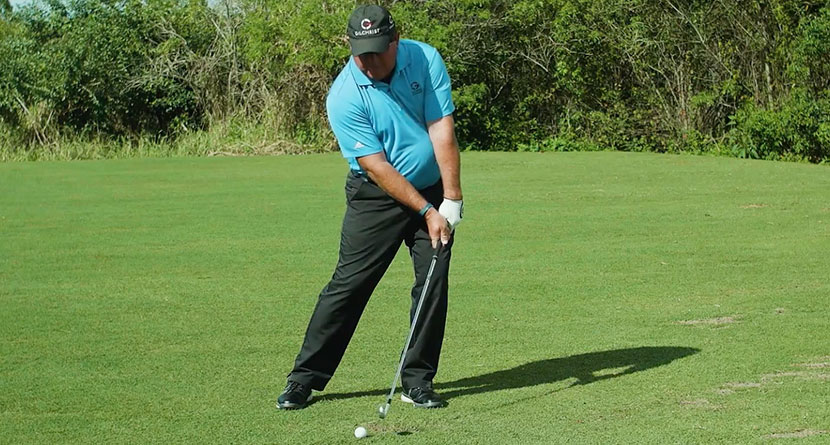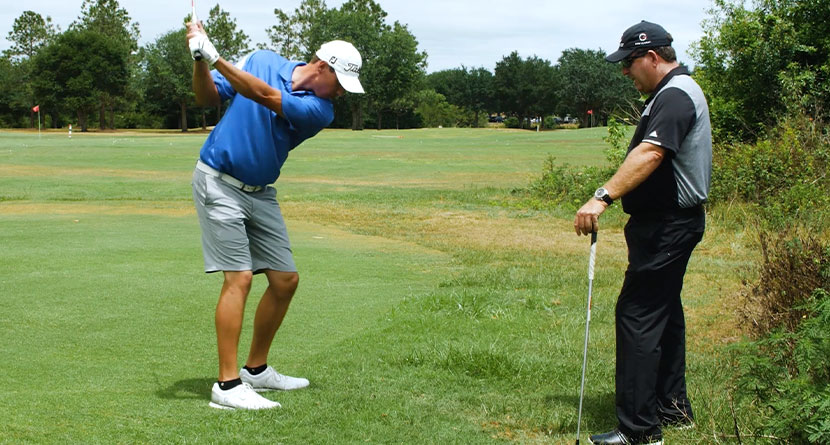“A man like Jack Nicklaus doesn’t like to stand there helpless.”
What a powerful result to a shot that could have gone wrong in so many ways. Tom Watson was able to hole this iconic shot on the 71st hole of the 1982 U.S. Open and truly control his fate in the tournament by properly executing a delicate chip from just off the 17th green at Pebble Beach.
Staring at a downhill shot with little green to work with is difficult enough. Throw in ankle-high rough and the added pressure of a major championship, and it can seem impossible. If you want to earn a victory lap like Watson took after holing his shot, pay very close attention to what the wedge did through impact and follow these key steps.
The Setup
- Depending on the severity of the downhill lie and the length of the shot, you will want to adjust your normal stance so your hips and shoulders are close to or matching the angle of the slope.
- A center ball position will work fine. Make sure to address the ball with the shaft more vertical. With this kind of shot, we DO NOT want any shaft lean. Too many amateurs will add forward shaft lean, introducing the leading edge too early, resulting in a chunk or bladed wedge.
- Finally, allow for adequate knee flex so you feel sturdy on the uneven lie.
The Swing
- This shot will require no lower body motion and very little upper body turn. The idea is to allow the arms and hands to bring the club back the appropriate length for the distance required, then return the club to a low spot that is slightly behind the ball. By using just arms and hands, the swing arc is steep, which will help produce a higher and softer trajectory.
- At impact, we want to hit behind the ball slightly to engage the bounce and add loft as the clubhead passes our hands. Just listen for the loud thump of the shot Watson hit. There is no click or ball-first contact. The wedge hits the ground and the bounce keeps it moving forward as he releases it. Again, players fail to execute this shot when they try to engage a low point that is too close to the ball or under it, causing a ball-first shot.
- Notice how Watson forced the wedge down and under the ball adding dynamic loft to the standard loft of the club. This motion can make a 56° wedge play like a 60° wedge (or more). Furthermore, because we tilted our body with the slope at address, the wedge, although passing our hands during the release, is still traveling down and will not be at risk of catching the ball thin.
- There does not need to be any turn or pressure shift through impact towards the target. Your goal is to stay stable and let the arms and hands move the club on a vertical arc that allows the clubhead to fall past the hands. Not having a follow through is to be expected. That is why Watson appears to be on his back foot as he watched the ball drop in the hole.













